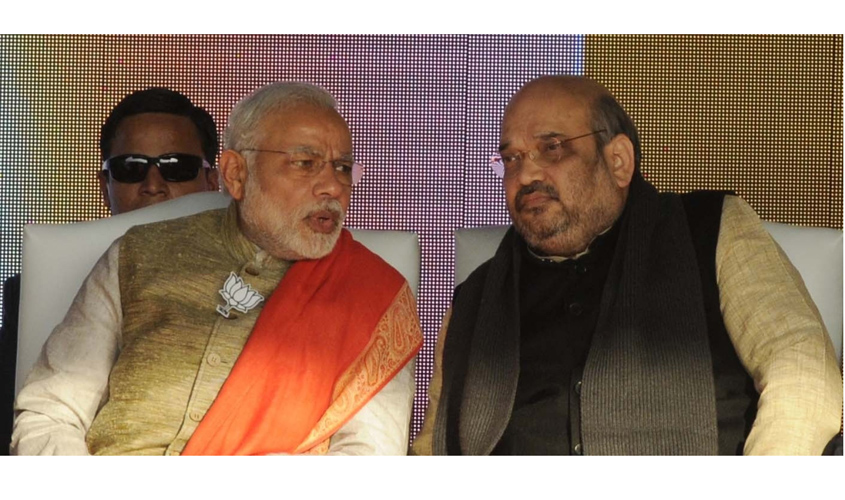Buoyed by the overwhelming victories in Uttar Pradesh, Uttarakhand and now Delhi, Prime Minister Narendra Modi proposes to bring about “spectacular changes” within the Bharatiya Janata Party so as to expand its hold and supremacy amongst different regions and castes. The “Modification” of the BJP is likely to happen shortly and would enable the PM to have greater say in selecting nominees for the forthcoming elections for the President and Vice President of the Republic.
To begin with, there may be a complete re-structuring of the powerful Parliamentary Board. According to informed sources, Cabinet Ministers on the Board are likely to be replaced by newcomers, who would be entrusted with consequential undertakings to energise the organisation in various parts of the country.
The Prime Minister simultaneously, in all likelihood, will go in for a major reshuffle of the Union Council of Ministers. The appointment and transfer of Governors is also on the cards. Several gubernatorial positions are lying vacant. In addition, the extended tenure of Andhra Pradesh and Telangana Governor E.S.L Narsimhan comes to an end on 2 May. There is also a move to replace Jammu and Kashmir Governor N.N. Vohra. There is intense speculation that a senior officer in the government, who has vast experience in dealing with high-profile assignments with distinction, could be appointed the head of the strife ridden border state.
The exercise to reorganise the party would commence next week. The majority of members of the National Executive as well as office bearers are reckoned to be replaced by fresh faces drawn from different castes and communities. At present, the Executive is dominated by the upper castes and therefore has inadequate representation from the OBCs and other sects and castes. The same proposition will be applied while finalising the new list of office bearers.
It is evident that PM Modi, who has received repeated affirmation from the people of the country, wants to use their confidence and the overall mandate to transform the BJP. It has been decided that the party should strive to get at least 50% vote share in its catchment states and areas. There is a proposal to appoint a panel of spokespersons at the level of each Lok Sabha constituency, so that the local issues of the people are addressed and the interaction at the grassroots level is reflective of the aspirations of various regions.
Sources stated that the makeover process to provide the organisation with a younger and fresh visage has already been initiated by BJP president Amit Shah. He has had a series of meetings with the Prime Minister and is understood to have discussed some of the ideas with a select group of journalists on Friday.
It is becoming increasingly evident that PM Modi wants to have a greater say in the organisational matters, thereby reducing the interference of the Rashtriya Swayamsevak Sangh (RSS) as far as possible. Till the A.B. Vajpayee and L.K. Advani era, the RSS’ role in party affairs was minimal. However, its influence and interference gradually increased once Nitin Gadkari and later Rajnath Singh took over as presidents. Sangh functionaries virtually started dictating terms.
With resounding success in the electoral arena, Modi is of the view that the party should have more independence in its working. One of the paramount reasons for him backing Yogi Adityanath for the Chief Ministership of the country’s most populous state, Uttar Pradesh, was that the Yogi has no strings attached to either the RSS or the BJP, but remains a very sought after Hindu leader in his own right. Thus, RSS functionaries, significant and not so significant, shall not be able to influence the working of his government and therefore he would take decisions based on merit as well his comprehension of issues. In other words, the UP government will function free of any external influence.
The “Modification” formula is also aimed at sending a formidable signal to the cadres and entails substituting the existing members of the Parliamentary Board with those who represent different castes and groups. Effectively decoded, it purports that out of the 12-member Parliamentary Board, barring Prime Minister Narendra Modi, party chief
The Union Cabinet, thus, would have many more fresh inductees, who will be handpicked by the Prime Minister. It has been for quite a while an unchallenged fact in the Sangh Parivar that Modi has emerged as the tallest ever leader of the BJP and, therefore, has the right to transform the party according to his own game plan. The new-look BJP would have a distinct Modi stamp.

